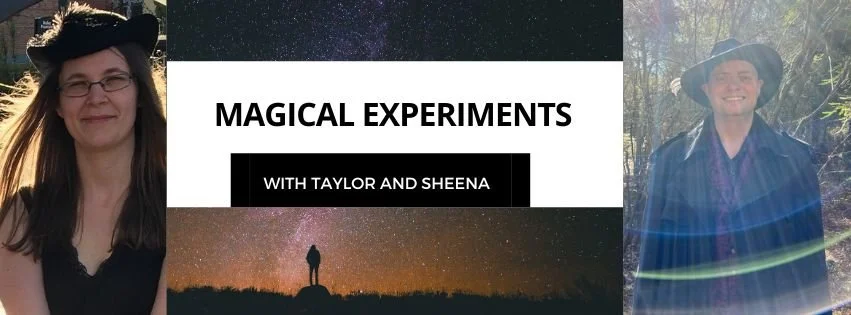 Two of the current books I'm reading are the Dimensional Structure of Consciousness by Samuel Avery and Wonders of the Natural Mind by Tenzin Wangyal Rinpoche. In Avery's book he explores the definition of consciousness, arguing that everything, material or otherwise, is a manifestation of conscious experience, and that dimensions are internal structures of consciousness used to organize the various experiences we have. It's an interesting definition of consciousness and I see some merit for it, though I question the concept of conscious experience, as it seems to create a solipsistic perspective of the world. He argues that space and time are dimensions, which doesn't fall that far outside current conceptions of space and time. In the midst of all this, he also discusses images, which he defines as a concept, thought, thing, feeling or object, and which he argues are the sole content of consciousness. He goes onto explain that conscious activity is a constant arrangement of images into other images, but he doesn't really explain how that activity factors into dimensions, though I suspect he'd argue that the manipulation of images allows the person to access and work different dimensional structures of consciousness.
Two of the current books I'm reading are the Dimensional Structure of Consciousness by Samuel Avery and Wonders of the Natural Mind by Tenzin Wangyal Rinpoche. In Avery's book he explores the definition of consciousness, arguing that everything, material or otherwise, is a manifestation of conscious experience, and that dimensions are internal structures of consciousness used to organize the various experiences we have. It's an interesting definition of consciousness and I see some merit for it, though I question the concept of conscious experience, as it seems to create a solipsistic perspective of the world. He argues that space and time are dimensions, which doesn't fall that far outside current conceptions of space and time. In the midst of all this, he also discusses images, which he defines as a concept, thought, thing, feeling or object, and which he argues are the sole content of consciousness. He goes onto explain that conscious activity is a constant arrangement of images into other images, but he doesn't really explain how that activity factors into dimensions, though I suspect he'd argue that the manipulation of images allows the person to access and work different dimensional structures of consciousness.
In Tenzin's book the author takes a more novel approach to space, arguing that space isn't limited to external or internal space, but rather that space is defined by the objects or forms in it. In other words, the forms define the parameters of space, as opposed to space, in and of itself. He also notes the distinctions we create are really attachments to defining space, but not experiencing it. Space is always present, always something that we are apart of, and yet also something that we try to quantify.
What I find fascinating about both books and the perspectives contained within them is how the authors approach a concept such as space. I'm more inclined to agree with Tenzin's perspective, and I find that if anything Avery's perspective is too caught up in trying to define the concepts without providing practical examples that illustrate what he is trying to define. Nonetheless I see value in utilizing the concepts of both books in my own work with space/time magic. Fundamentally when you deal with concepts such as space and time, what you are really dealing with is trying to place them into context within your life. It's as if by defining them we suddenly have a sense of control over them.
There is something to be said for defining a concept, but also something to be said for simply experiencing it. When I wander into a room, I am intimately aware of how the space of the room is defined by the objects within the room, but I am also aware of the space in and of itself. The space is potential waiting for action to occur, which seems to really happen when time is applied to that space. The application of time occurs through a fairly subjective filter, namely our sense of consciousness motivating us to do something, to act. Does time even exist if no one exists is to comprehend it? And this is where I could see time as a dimension of consciousness used to explain, categorize, and organize experiences that occur in space, but also used to turn possibilities into reality by providing a projection and action in which to achieve that projection.
Books like the ones I mentioned above, and my own for that matter, are useful in providing ideas about space and time and how to work with them, but I think that ultimately to really experience space and time is to simply work with them as elements of our lives. We experience space and time everyday, in the living of our lives, but if we want to work with space and time, we need to consciously apply ourselves to working with the experience of space and time so that we can discover more than just the surface level exposure most people typically get. That means we actively work with the experience and perception of space and time, defining it, but also playing with those definitions, because we recognize that any experience is ultimately subjective. Yes everyone experiences a 24 hour day, but 24 hours is a subjective unit used to describe the rotation of the Earth around the sun. 24 hours just gives a sense of control and direction, a rhythmic and cyclical experience to quantify our lives. When you recognize its subjective, then you don't take space, time, or anything else for granted, because you recognize that when such subjectivity is passed off as objectivity, someone else is benefiting from your believe in the objectivity of space and time. You experience that benefit when you go to work for someone else and exchange a subjective sense of time for money that quantifies what that unit of time is worth. Test everything that is qualified as objective, because objectivity is more of an illusion than anything else.

